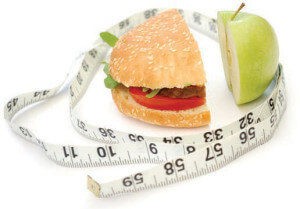Calorie Counting: A Weigh In

Conventional wisdom: a calorie is a calorie, and to lose weight, you must take in fewer calories than you expend.
Fast forward to today: all calories are not created equal. What makes up that calorie is more important than the calorie itself, emphatically stated by Jim Kirchoff, former CEO ofWeight Watchers. “When we have a 100-calorie apple in one hand and a 100-calorie pack of cookies in the other, and view them as being the same, it says everything that needs to be said about the limitations of just using calories in guiding food choices.” Whether for weight loss or simply for seeking a balanced diet, the emphasis today has shifted away from calorie counting and toward minimally processed natural foods, with high protein and fiber favored over fat and carbohydrates.
Calories are units of energy, the fuel your body needs to run. Protein, fat and carbohydrates each provide a different number of calories per gram weight. The Atwater system, developed in the 1890s, assigns four calories per gram for protein and carbohydrates, and nine calories per gram for fat.
Nutritionists explain that carbohydrate-loaded, highly processed foods are more rapidly absorbed by the body and turned into fat. Plant-based, high-fiber foods, however, make the body work harder to digest them. By slowing the rate that sugar is absorbed into the bloodstream, fiber prevents blood glucose levels from rising too fast and then falling rapidly, resulting in that familiar “crash” which causes you to feel hungry again, and overeat.
“If you’re focusing only on calories, you can easily be misguided. In a complex organism like a human being, foods influence satiety, metabolic rate, brain activity, blood sugar and the hormones that store fat in very different ways,” says Dr. Dariush Mozaffarian, Harvard epidemiologist.
As recently illustrated in the documentary Fed Up, the modern food industry tends to maximize the number of calories it takes to feel full, by adding unnecessary sugar to all types of products. High-fiber, high-volume, nutrient-dense foods have the opposite effect, minimizing the number of calories needed to feel satisfied. “Making better food choices offers us ways to feel full on fewer calories and be lean without constantly feeling hungry,” explains Dr. David Katz, founder, Yale University’s Prevention Research Center.
That forms the basis of Jonathan Bailor’s eating plan detailed in The Calorie Myth, based on 13 years of nutritional research. The key is to begin with high-volume vegetables (start with a salad, for example), followed by protein, then whole food fats such as nuts and seeds, and end the meal with low-fructose fruits (strawberries, kiwi). “It’s nearly impossible to overeat like this, because your stomach would be uncomfortably full,” says Bailor.
Other experts agree that a focus on “real food” will naturally lead to consumption of fewer calories. Start your grocery shopping by concentrating on the perimeter of the store, where fresh vegetables and fruits abound. Purchase sparingly from the inner aisles, where highly processed foods are more likely to be located. Additionally, learn how to quickly scan nutrition labels for information that may be hidden. For example, four grams of sugar is equivalent to a teaspoon of sugar, which means that even low-fat yogurts often contain up to six teaspoons of sugar per serving.
The payoff: as you eliminate superfluous sugar, salt, trans fat and food chemicals, your taste buds become more sensitive and ultimately prefer unprocessed, more nutritious foods. “This process can be reverse-engineered one step a time, so we can climb a staircase up to the health and vitality we want, and deserve,” says Dr. Katz.

